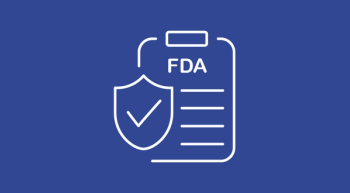
Oral Cannabis Extract May Be Beneficial as Secondary Prevention of Chemotherapy-Induced Nausea and Vomiting
Oral cannabis extract may be useful as an adjunct for chemotherapy-induced nausea and vomiting, although it may be associated with additional adverse events.
Oral cannabis extract was effective in the secondary prevention of chemotherapy-induced nausea and vomiting compared with placebo in patients treated with moderately or highly emetogenic, intravenous chemotherapy despite guideline-consistent antiemetic prophylaxis, according to a study published in the Journal of Clinical Oncology.
This method of secondary prevention of chemotherapy-induced nausea and vomiting, which included capsules of 2.5 mg of tetrahydrocannabinol (THC) plus 2.5 mg of cannabidiol (CBD), was associated with additional adverse events including transient anxiety, dizziness, and sedation, patients reported.
Among 147 eligible participants, patients assigned the oral cannabis extract, compared with placebo, had an increased complete response rate (24% vs 8%; absolute difference, 16%; 95% CI, 4-28, P = .01). Additionally, similar effects on complete response rates were observed for the absence of significant nausea, use of rescue medications, daily vomits, and the nausea scale on the Functional Living Index—Emesis (FLIE) quality-of-life questionnaire.
Similarly, complete response rates in the oral cannabis extract and placebo groups was 28% and 9%, respectively, for no rescue medication used (absolute difference, 19%; 95% CI, 6-31, P = .01) and 20% and 7% for no significant nausea (absolute difference, 13%; 95% CI, 2-24, P = .03).
“Our data support the claim that [the oral cannabis extract] is an effective and safe option for the prevention of refractory [ chemotherapy-induced nausea and vomiting]. Availability, access, affordability, cultural attitudes, societal barriers, and legal barriers may limit implementation,” study authors wrote.
Regarding quality of life, patients assigned oral cannabis extract had higher scores compared with those assigned placebo according to the FLIE nausea summary scale (mean scores 67 vs 48; difference, 19; 95% CI, 9-28, P < .001)
The rate of adverse events was higher in the oral cannabis extract group vs placebo and include sedation (18% vs 7%), dizziness (10% vs 0%), and transient anxiety (4% vs 1%). No serious adverse events occurred as a result of treatment with oral cannabis extract, the researchers noted in the study.
Patients received oral capsules 3 times a day from days –1 to 5 containing either tetrahydrocannabinol 2.5 mg plus cannabidiol 2.5 mg or matching placebo.
“To improve tolerance, we used a combination of THC with CBD, and allowed dose titration starting the day before each chemotherapy cycle,” the study authors wrote. “We used a pharmaceutical-grade oral capsule formulation to improve accuracy and convenience of dosing, in comparison with cannabis oil or inhaled cannabis products.”
Additionally, all patients received guideline-consistent antiemetic prophylaxis, including olanzapine (10%), a corticosteroid and 5-hydroxytryptamine (97%), and a neurokinin-1 antagonist (80%). All patient outcomes came from 0-120 hours after the first cycle of chemotherapy.
To be eligible for this phase 2/3 trial, patients were required to be 18 years or older, have a solid tumor or hematologic malignancy of any stage, receiving treatment with intravenous chemotherapy of moderate or high emetogenic risk, and scheduled for 2 or more consecutive cycles of the same chemotherapy. Patients in this trial experienced refractory chemotherapy-induced nausea and vomiting in an earlier cycle of treatment with the same chemotherapy regimen despite antiemetic prophylaxis.
The primary measure of this trial was the difference of patients receiving oral cannabis extract vs placebo who achieved a complete response, which was defined as no vomiting or retching and no use of rescue medication, during hours 0 to 120 after the first cycles of chemotherapy during this trial. Secondary endpoints in this trial included self-reported complete responses, no emesis, no rescue medication use, no clinically significant nausea, and complete control.
Clinical assessments were performed on patients by the investigator on day –1 of cycles A, B, and C, and at 30 to 42 days after the last dose of the study treatment. Patients also recorded their experience of adverse events in a diary for days –1 to 5 of each cycle.
“Future research should evaluate alternative cannabinoids formulations, sequencing, and/or combinations with other antiemetics; comparison of cannabinoids vs olanzapine; and the use of cannabinoids as primary prevention of [chemotherapy-induced nausea and vomiting] (rather than secondary prevention for refractory [chemotherapy-induced nausea and vomiting]),” the study authors wrote.
Reference
Grimison P, Mersiades A, Kirby A, et al. Oral Cannabis Extract for Secondary Prevention of Chemotherapy-Induced Nausea and Vomiting: Final Results of a Randomized, Placebo-Controlled, Phase II/III Trial. J Clin Oncol. Published online August 16, 2024. doi:10.1200/JCO.23.01836
Newsletter
Knowledge is power. Don’t miss the most recent breakthroughs in cancer care.
















































































